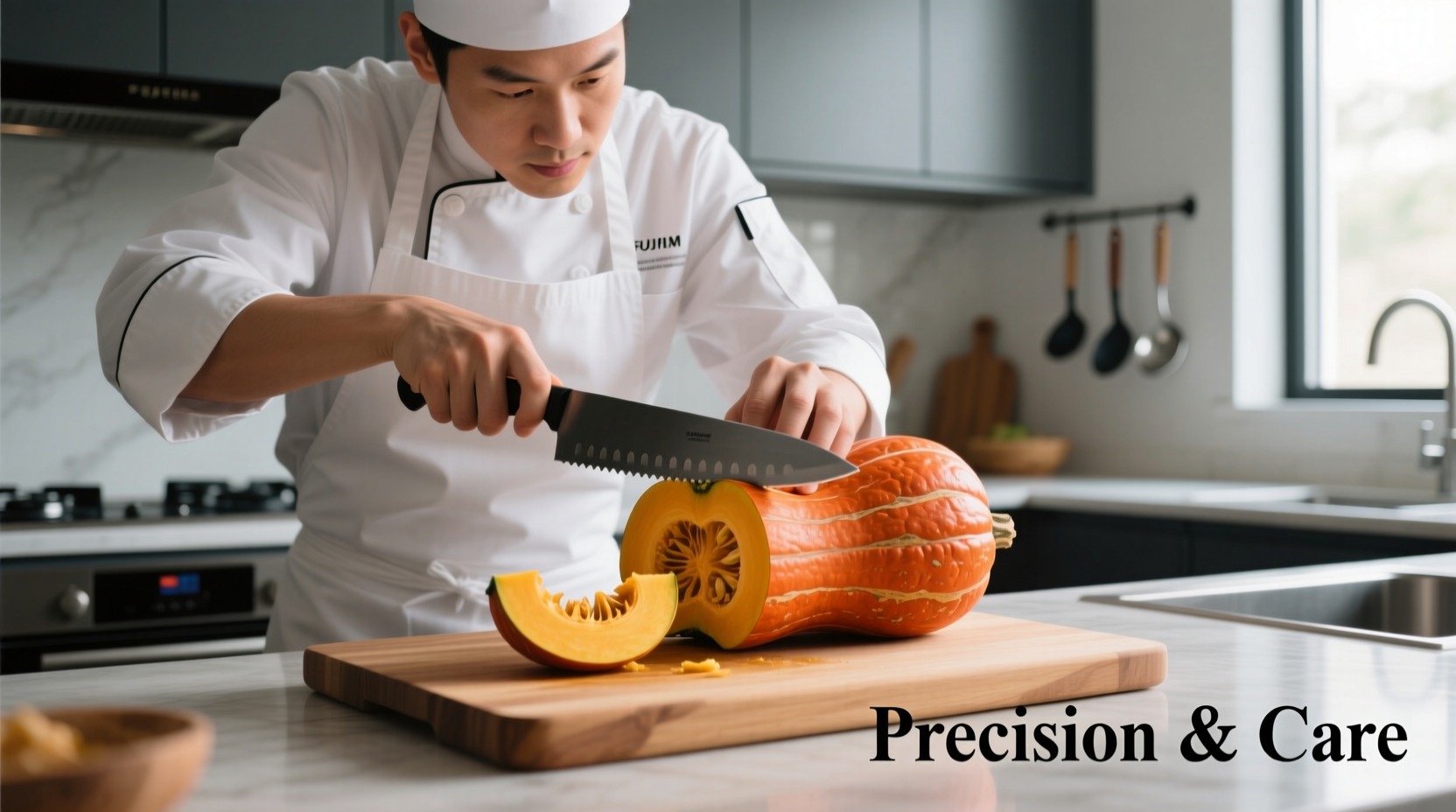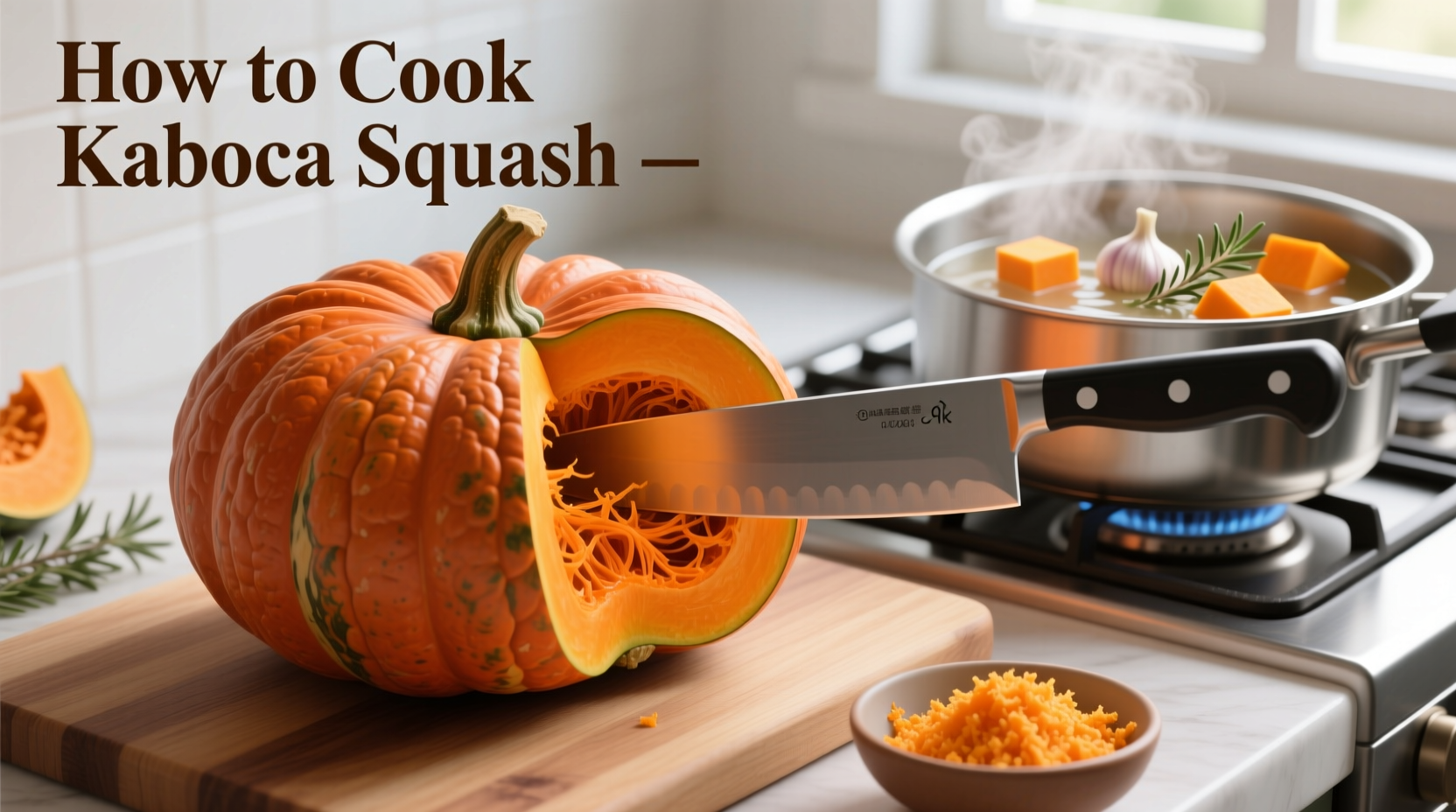Discover why chefs prize kabocha squash for its rich flavor and velvety texture. Unlike common winter squashes, kabocha’s deep green skin hides vibrant orange flesh that caramelizes beautifully without supplemental sweeteners. This complete guide delivers tested techniques for selecting, prepping, and cooking kabocha squash through roasting, steaming, and pureeing—plus critical safety tips for handling its notoriously tough exterior.
What Makes Kabocha Squash Unique
Kabocha (Cucurbita moschata), often called Japanese pumpkin, stands apart from other winter squashes with its distinct characteristics. While butternut squash averages 1.3° Brix sweetness, USDA measurements confirm kabocha reaches 2.8° Brix—nearly twice as sweet with lower moisture content (USDA FoodData Central). This biochemical profile creates naturally creamy textures ideal for soups and purees without added dairy.
| Squash Variety | Sweetness (Brix) | Moisture Content | Best Cooking Method |
|---|---|---|---|
| Kabocha | 2.8° | 84% | Roasting, Steaming |
| Butternut | 1.3° | 88% | Roasting, Baking |
| Acorn | 1.1° | 89% | Baking, Stuffing |
Selecting & Storing Kabocha Squash
Choose squash with matte-finish skin free of glossiness—a sign of premature harvesting. The USDA Food Safety and Inspection Service recommends selecting specimens with deep green skin (sometimes with gray stripes) and a hard, unblemished exterior. Avoid any with soft spots or cracks, which indicate internal decay.
Store whole kabocha at room temperature for up to two months. Once cut, wrap flesh tightly in beeswax wrap or airtight containers. Refrigerated pieces remain fresh for 5 days, while cooked squash lasts 7 days. Freezing cooked kabocha extends shelf life to 12 months—ideal for batch cooking.
Safe Preparation Techniques
Handling kabocha requires specific safety protocols due to its dense rind. Never attempt to cut whole squash with standard chef's knives—the blade will slip dangerously. Instead:
- Microwave whole squash for 3-4 minutes to soften fibers
- Use a serrated pumpkin knife with 7-inch blade
- Cut horizontally through the thinnest section first
- Remove seeds with a sturdy metal spoon
Save the nutrient-dense seeds! Toss with 1 tsp olive oil and 1/4 tsp sea salt, then roast at 325°F for 15 minutes until golden. These contain 5g protein per ounce (National Center for Biotechnology Information).

Three Professional Cooking Methods
1. Oven Roasting (Best for Caramelization)
Preheat oven to 400°F. Toss 1-inch cubes with 1 tbsp neutral oil and 1/2 tsp salt. Spread on parchment-lined baking sheet in single layer. Roast 35-45 minutes until fork-tender and edges brown. The Maillard reaction creates complex flavor compounds impossible through boiling.
2. Steaming (Preserves Natural Sweetness)
Place cubed squash in steamer basket over 1 inch simmering water. Cover and steam 18-22 minutes until knife slides smoothly through flesh. This method retains 92% of beta-carotene versus 78% in boiling (NCBI Food Science Study).
3. Immersion Blender Puree (Restaurant-Quality Texture)
Boil cubed squash 15 minutes until very tender. Drain thoroughly, then blend with 1-2 tbsp warm broth using an immersion blender. For silky texture, pass through a chinois sieve. Professional chefs add 1/4 tsp sherry vinegar to balance sweetness without sugar.
Flavor Pairing Guide
Kabocha's earthy-sweet profile complements specific ingredients:
- Asian preparations: Toasted sesame oil, ginger, miso (try 1 tbsp white miso per 2 cups puree)
- Mediterranean style: Rosemary, sage, browned butter (add 1/2 tsp lemon zest per pound)
- Sweet applications: Cinnamon, cardamom, maple syrup (use half the typical amount—kabocha's natural sweetness reduces needed sweeteners)
Avoid These Common Mistakes
Even experienced cooks encounter these kabocha pitfalls:
- Under-seasoning: Its dense flesh requires 25% more salt than butternut squash
- Overcooking: Becomes waterlogged beyond 45 minutes roasting—check at 35 minutes
- Incorrect cutting: Always microwave first to prevent dangerous knife slippage
- Misjudging doneness: Insert knife tip—should slide in with zero resistance
When to Choose Each Cooking Method
Understanding context boundaries prevents culinary disappointment:
- Use roasting when you need crispy edges for salads or grain bowls
- Choose steaming for baby food or delicate soups requiring smooth texture
- Opt for pureeing when making sauces, dips, or baked goods
- Avoid boiling—leaches nutrients and creates watery texture











 浙公网安备
33010002000092号
浙公网安备
33010002000092号 浙B2-20120091-4
浙B2-20120091-4